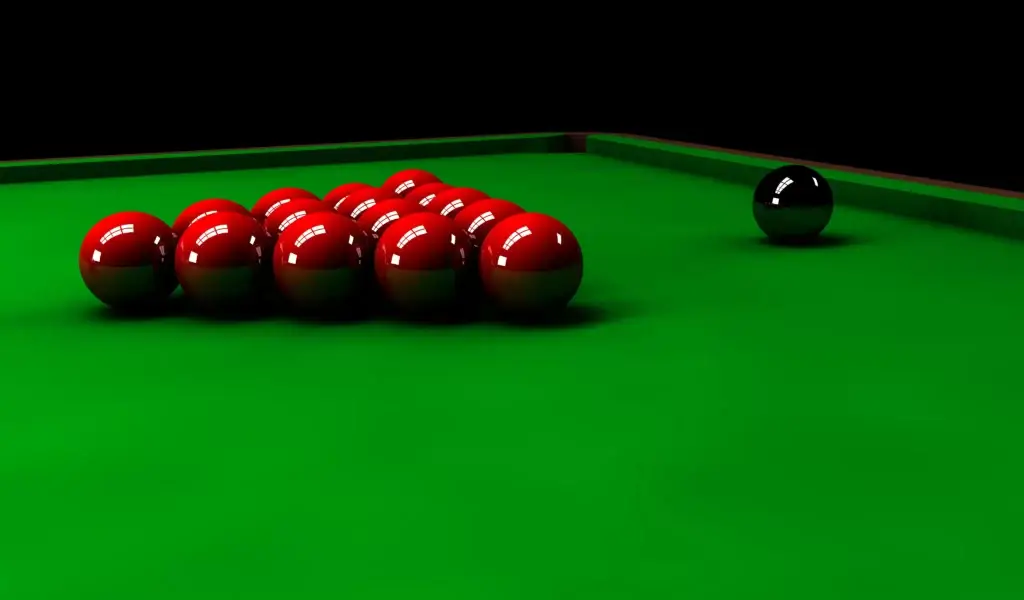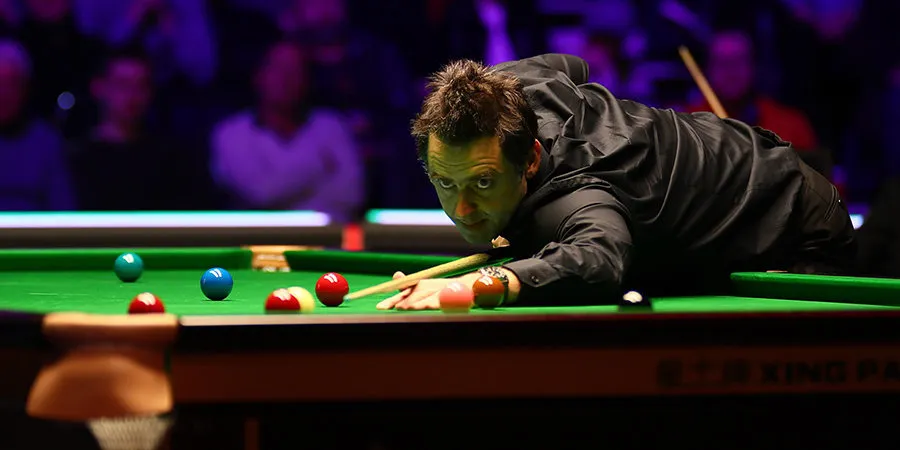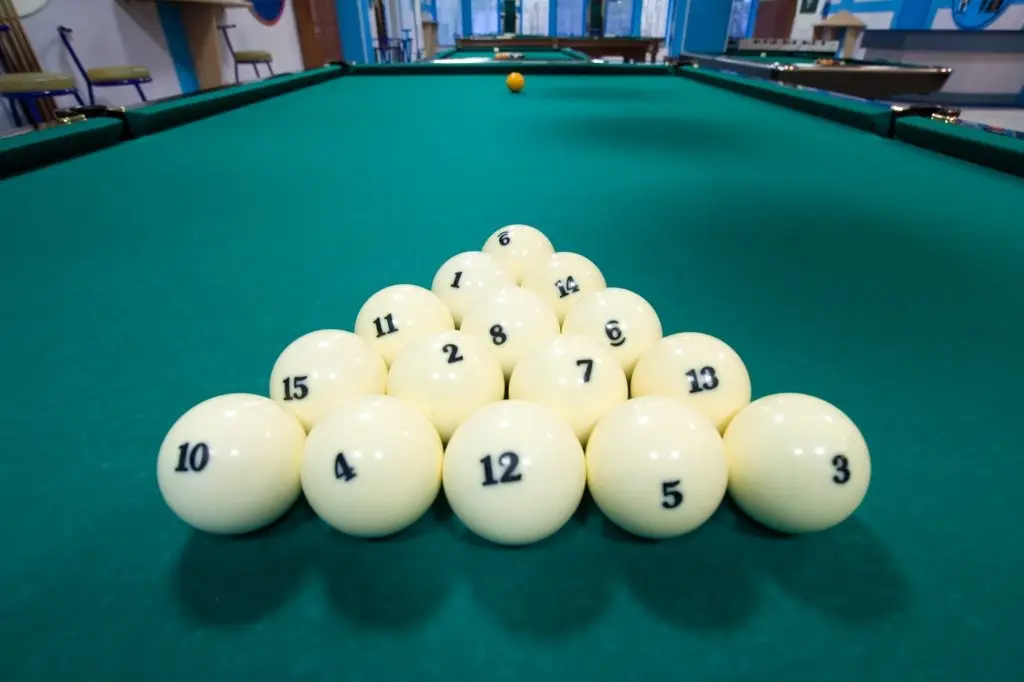Another type of billiards where tactics and psychology become no less important than the technique of the stroke. Snooker and learning its rules is the key to entering an intellectual world in which every action is thought out and filled with meaning. Legendary matches, such as the duel between Ronnie O’Sullivan and Stephen Hendry, leave their mark on history due to their deep strategy, making spectators forget about time.
Snooker Basics: How to Get Started
The game is a complex strategy that requires not only precision and good technique, but also an intellectual approach. A standard snooker table measuring 3.6 by 1.8 meters has 21 balls: 15 red and 6 colored, each with a unique value and point value. Colored balls, such as the black (7 points) or pink (6 points), are strategically important, because pocketing them after the red ones allows you to maximize your score.

The cue is the main tool and should be between 140 and 150 cm long. Professionals constantly adjust their cue, selecting unique tips to make the strikes as sensitive and accurate as possible. Adjusting a cue is like sharpening a sword before a fight.
How to play snooker: the main rules and the first step to victory
The start begins with the correct positioning and approach to the table. The first thing a beginner should learn is the stance and grip of the cue. The correct stance is confidence based on balance. The legs should be shoulder-width apart, and the center of gravity should be directly above the table. The grip should not be too tight so as not to limit the movement of the wrist, but not too weak so as not to lose control over the strike.
The first strike, the so-called “break”, is carried out from the D line. Here, not only technique is important, but also psychology: a person must feel confident, because the break sets the tone for the entire frame. Snooker rules for beginners recommend using softer strokes for precise positioning, which reduces the risk of hitting a foul.
Scoring: Art in numbers
Each red ball is worth 1 point, followed by a coloured ball, which can be worth 2 to 7 points. The order of strokes is an important element of strategy: after each red, the player must pot a coloured ball, after which it is returned to its place on the table.
For example, if a player pots a red and then pots a black ball (7 points), his total for that move will be 8. This tactic is known as a “black break” and is preferred by professionals, as it maximizes the number of points scored.
Scoring strategy: how to keep the score under control?
Correct scoring and taking into account possible penalties are the basis for a successful strategy. The basic rules of snooker include using every point to your advantage and constantly monitoring the situation on the table. Professionals plan their shots 3-4 moves ahead to ensure optimal scoring positions and minimize the opponent’s chances of a successful counterattack.
Fouls and Penalties: How to Avoid Mistakes
 Fouls in snooker can be a real problem for beginners. One of the most common is missing the target ball, especially when trying to pot a color. This often happens due to improper cue setting or hitting too hard. According to snooker rules, in the event of a foul, the opponent receives at least 4 penalty points, and depending on the type of error – even more.
Fouls in snooker can be a real problem for beginners. One of the most common is missing the target ball, especially when trying to pot a color. This often happens due to improper cue setting or hitting too hard. According to snooker rules, in the event of a foul, the opponent receives at least 4 penalty points, and depending on the type of error – even more.
Another typical error is accidentally hitting the black ball when it is not the target. This can lead to serious consequences, especially if the black is pocketed, because in this case the opponent receives additional points.
Penalties in snooker: the cost of a mistake
Penalties are awarded in case of fouls, and each can affect the outcome. The minimum penalty is 4 points, but if the error concerns the pocketing of the black ball, the amount increases to 7. It is important to consider that penalties not only reduce the score, but also give the opponent additional opportunities, which makes the game even more unpredictable.
Snooker and Pool: Comparison of Rules
When comparing the rules, you can immediately notice that the types differ not only in the number of balls, but also in the complexity of tactics. Pool usually uses 9 or 15 balls, and the goal is to pocket them all as quickly as possible. In snooker, the main goal is to score as many points as possible using complex combinations of shots.
Pool is a more dynamic game in which speed and dexterity are important, while snooker is a real art of strategy. It also uses more complex tables, 3.6 meters long, which requires the participant to be highly accurate and able to predict the movements of the balls over a long distance.
Snooker in Russia: Growing Popularity
In Russia, the type has begun to actively develop in recent decades, and today this game is gaining popularity among billiards fans. In large cities such as Moscow and St. Petersburg, tournaments are regularly held that attract not only professionals, but also amateurs. Russian player Igor Figurin has already managed to show himself on the international stage, winning prizes in European tournaments.
Specialized clubs have appeared in Russia where you can not only play snooker, but also get lessons in the rules from professionals, which allows the sport to develop and attract new fans. The prospects are quite optimistic, as interest in intellectual sports is growing.

Conclusion
 The rules of snooker open up a whole world of intelligent play, where it’s important not only to score balls, but to strategically construct each of your moves. Try playing and experience the magic of every shot and frame. The process requires maximum concentration, tactics and creativity. Take the cue in your hands and feel how each shot brings you closer to mastery – because the real beauty of snooker is in its depth and complexity.
The rules of snooker open up a whole world of intelligent play, where it’s important not only to score balls, but to strategically construct each of your moves. Try playing and experience the magic of every shot and frame. The process requires maximum concentration, tactics and creativity. Take the cue in your hands and feel how each shot brings you closer to mastery – because the real beauty of snooker is in its depth and complexity.
 en
en  ru
ru  de
de  ar
ar  es
es  nl
nl  hi
hi  fr
fr  it
it  pt
pt  el
el 



